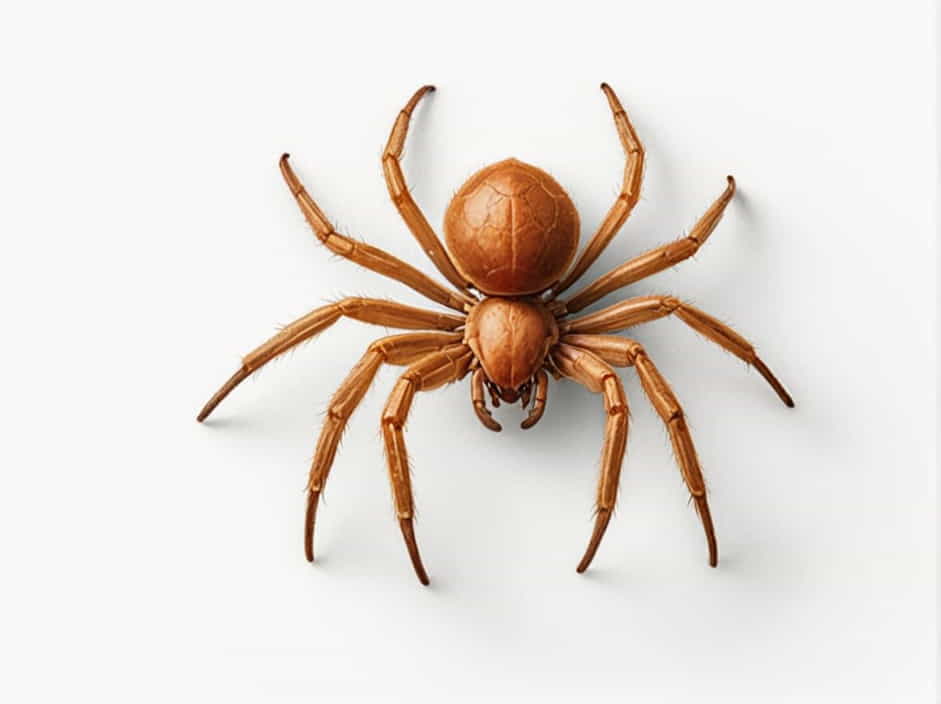The brown recluse spider (Loxosceles reclusa) is a venomous spider found in parts of the United States, particularly in the Midwest and Southern regions. While these spiders prefer to avoid contact with humans and animals, their bite can be extremely harmful. Dogs, being curious creatures, are sometimes bitten when they unknowingly disturb a brown recluse in their environment.
This topic will help pet owners recognize the symptoms of a brown recluse spider bite on dogs, understand how to treat it, and learn ways to prevent these bites from occurring.
What Is a Brown Recluse Spider?
Physical Characteristics
- Small to medium-sized (around 0.25 to 0.5 inches in body length).
- Light brown to dark brown in color.
- A distinctive violin-shaped marking on its back.
- Six eyes (unlike most spiders, which have eight).
Habitat and Behavior
- Prefers dark, undisturbed places like woodpiles, sheds, and basements.
- Nocturnal hunters that feed on insects.
- Bites usually occur when they feel threatened or trapped against the skin.
Symptoms of a Brown Recluse Spider Bite on Dogs
Early Symptoms (0-6 Hours After the Bite)
- Mild redness and swelling at the bite site.
- The dog may lick or scratch the area excessively.
- Possible discomfort or mild pain.
Progressive Symptoms (6-48 Hours After the Bite)
- The bite area may become darker and more swollen.
- A bullseye pattern may develop (red outer ring with a pale center).
- Formation of a blister or open sore.
- The dog may show signs of pain, lethargy, and loss of appetite.
Severe Symptoms (48 Hours to Several Days Later)
- Necrosis (tissue death), causing the skin to turn black and slough off.
- Development of a deep ulcer, which may take weeks to heal.
- Possible fever, weakness, or difficulty walking if the venom spreads.
- In rare cases, systemic reactions affecting the kidneys and liver.
What Does a Brown Recluse Spider Bite Look Like on a Dog?
Brown recluse spider bites on dogs can vary in severity. Here’s what they might look like:
- Mild cases: A small red bump, similar to an insect bite.
- Moderate cases: A blister that ruptures, leaving an ulcer.
- Severe cases: Large areas of dead tissue with exposed flesh.
Note: If you suspect a brown recluse spider bite, seek veterinary care immediately to prevent complications.
How to Treat a Brown Recluse Spider Bite on Dogs
Immediate First Aid at Home
- Clean the wound with mild soap and water to prevent infection.
- Apply a cold compress to reduce swelling and pain.
- Keep your dog calm and prevent excessive movement to slow venom spread.
- Do not attempt to drain the wound or apply harsh chemicals.
Veterinary Treatment Options
A veterinarian may recommend:
- Pain relief medication to ease discomfort.
- Antibiotics to prevent bacterial infection.
- Wound care and bandaging to promote healing.
- Surgical removal of necrotic tissue in severe cases.
- Intravenous fluids and supportive care if systemic symptoms develop.
There is no specific antivenom for brown recluse spider bites, so treatment focuses on managing symptoms and preventing secondary infections.
Can a Brown Recluse Spider Bite Kill a Dog?
Most dogs survive brown recluse bites, but severe cases can lead to serious complications like:
- Tissue loss, requiring weeks or months to heal.
- Secondary bacterial infections, leading to further complications.
- Systemic illness, particularly in smaller or immunocompromised dogs.
Immediate veterinary care significantly improves outcomes.
How to Prevent Brown Recluse Spider Bites on Dogs
1. Keep Your Home and Yard Clean
- Regularly vacuum and dust to remove hiding spots.
- Declutter storage areas, especially attics, basements, and sheds.
- Store firewood and outdoor items away from the house.
2. Use Pest Control Methods
- Seal cracks and gaps in walls, windows, and doors.
- Use sticky traps in areas where spiders are likely to hide.
- Consider natural deterrents, like diatomaceous earth or essential oils (eucalyptus, peppermint).
3. Check Your Dog’s Sleeping and Play Areas
- Shake out dog beds, blankets, and toys before use.
- Inspect kennels, garages, and outdoor shelters for spiders.
- Teach your dog to avoid dark, enclosed spaces where spiders may hide.
Brown recluse spider bites on dogs can range from mild irritation to severe tissue damage. Recognizing the early symptoms, seeking prompt veterinary care, and taking preventative measures can help keep your pet safe. While these bites are rare, being aware and proactive ensures your dog remains healthy and free from unnecessary suffering.
